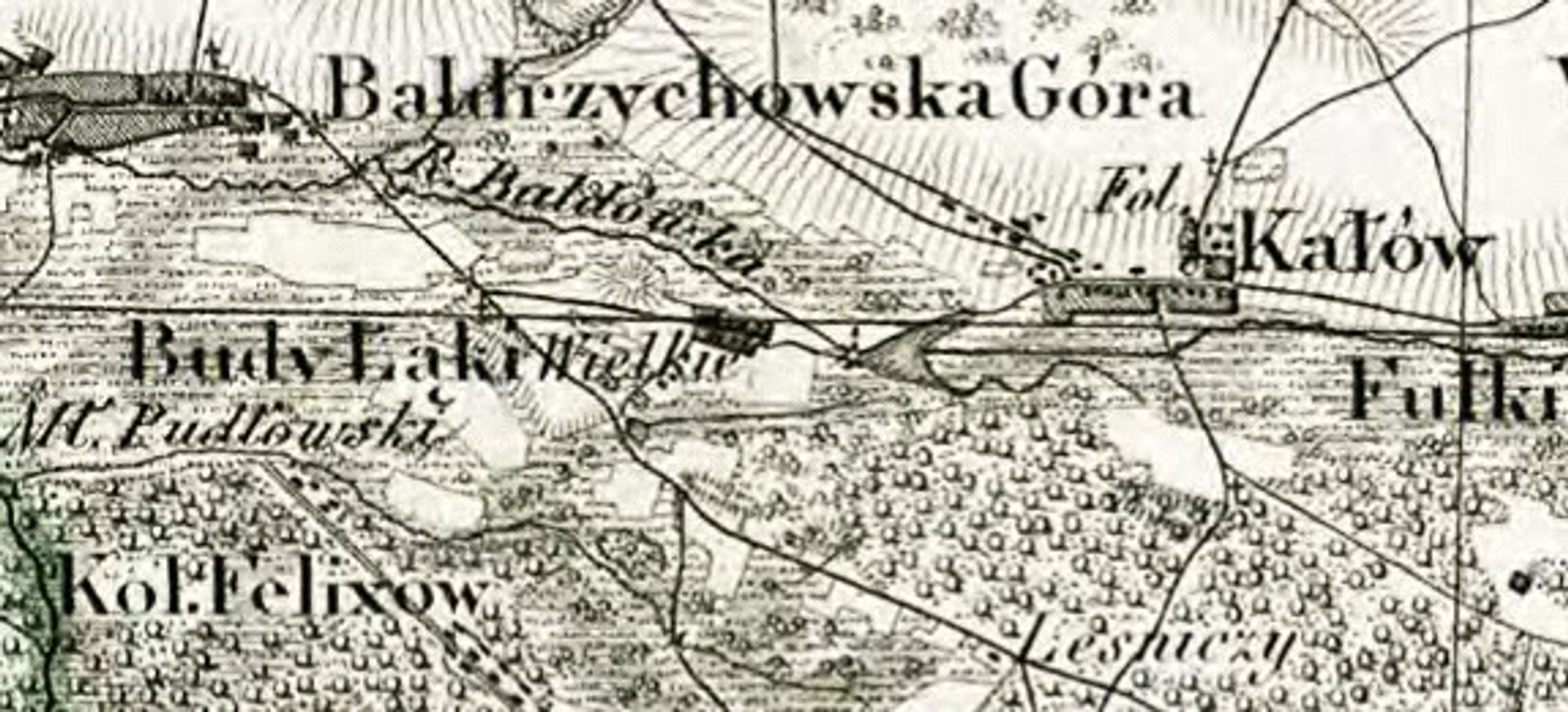Kałów
6.25

Overview
Kałów is a village in Poland, located in the Łódź Voivodeship, in Poddębice County, within the administrative district of Gmina Poddębice. Formerly a town, it was granted town rights before 1500 and likely lost its municipal status in the early 19th century. The area retains numerous traditional names for fields and forests. Kałów is situated on the Bełdówka River, close to major transportation routes, including a railway main line and the A2 motorway interchange. The surrounding area features forest complexes, including a peat bog reserve, and is part of the "Puczniewsko-Grotnicki Protected Landscape Area." The first mention of the village dates back to 1387, when it was owned by the nobility, and it obtained town rights before 1592. Despite its potential, Kałów developed more slowly than neighboring towns, primarily due to its inconvenient location. Inhabitants were mainly engaged in agriculture, while a significant portion of the Jewish population was involved in trade. In the 18th century, the town had a town hall but gradually lost its urban functions. An important event in Kałów's history was the 1863 skirmish between insurgents and Cossacks. In the 19th century, the village went through various administrative stages, including Prussian partition, the Duchy of Warsaw, and the Kingdom of Poland. In the 20th century, Kałów became part of the Second Polish Republic, and after 1939, it was incorporated into Nazi Germany. From 1959 to 1972, it was the seat of a gromada (administrative unit), and from 1975 to 1998, it belonged to the Sieradz Voivodeship. A notable historic site in Kałów is the Church of St. Nicholas, a wooden structure built in 1786 and funded by the Sulimierski brothers. After numerous renovations, the church has retained its Baroque interior decor and valuable features such as Rococo organs. The bell tower and a chapel near the church also hold architectural significance. Annually, Kałów hosts the Bydgoszcz Diocesan Pilgrimage on Foot, which attracts many pilgrims. Among the notable figures associated with Kałów is Roman Morawski, a participant in the Warsaw Uprising. Thus, Kałów is a place rich in history, traditions, and architecture, with its monuments and cultural aspects drawing considerable interest.
Location
2025 Wizytor | All Rights Reserved